Transhumanism technology! What is transhumanism technology? Examples, technologies & methods: mind uploading, superintelligence and cryogenic preservation.
This article is about transhumanism technologies. Other articles about this topic are: what is transhumanism, books, movies and art.
What are transhumanism technologies?
These are currently the most prominent ideas about transhumanism technologies:
- Cryogenic suspension: freezing your body or brain;
- Mind uploading: being conscious on a machine or in the cloud;
- Superintelligence: the rise of artificial intelligence;
- Robots & Cyborgs: not dependent on our biological bodies;
- Hive mind: brains connected in a swarm.
I elaborate on these concepts below.
Transhumanism technology video
I made a video about this topic on my YouTube-channel:
In this part you can read more about cryogenic suspension.
Cryogenic suspension (1)
Another widely-held vision within transhumanism is to freeze the body and/or brain after death. This is called cryonics, cryogenic suspension or cryogenic preservation. These are people who allow themselves to freeze after their clinical death. You can choose for the whole body or just the head.
If technology has developed to the point that their disease can be cured, the people who have undergone this treatment want to be thawed. Worldwide there are now around 400 to 500 people in a cyrogen state. The first formulation of the idea was in Robert Ettinger’s book The Prospects of Immortality from 1962.
Cryogenic suspension companies
In May 2017, I was featured in BNNVARA’s Dutch television program Valerio4ever on Nederland 3. In this broadcast you saw that Valerio went to Scottsdale (Arizona, United States) to visit the company Alcor Life Extension Foundation. Alcor is a company that offers cryogenic suspension. I spoke with the director Max More at a congress in Helsinki in 2017.
Alcor is the largest of the companies in the world that deal with cryogenic suspension. In addition to Alcor, Cryonics Institute in Clinton (Michigan, United States), American Cryonics Society in Sunnyville (California, United States) and Kriorus (Moscow, Russia) offer these services.
In addition to these companies, the Timeship project was in the news in 2016. The goal of Timeship is to become the largest location for cryogenic suspension. Thousands of patients would be frozen and stored in the building.
Cryogenic preservation
Cryonauts are people who allow themselves to freeze (the entire head or just the body). If the technology has developed to the point that their disease can be cured, they want to be thawed.
James Bedford, a psychology professor who died of cancer in 1967, was the first person who, at his own request, was frozen in liquid nitrogen in the hope of being brought back to life later. The youngest patient at Alcor is two-year-old Matheryn Naovaratpong. In a hospital in Bangkok it appeared that she had an 11-centimeter tumor in her brain, after which she fell into a coma. After a number of operations, she regained consciousness, but the disease had spread throughout the body. The doctors estimate the chances of survival as nil, after which her parents decided to give her up for cryogenic preservation.
They are, as it were, stopped on the threshold between this world and what may or may not follow.
Mark O’Connel, author
The cryonauts are referred to as patients by Alcor (not as a body or corpse). The reason for this is the vision that their lives have been suspended rather than ended. Mark O’Connel: ‘They are, as it were, stopped on the threshold between this world and what may or may not follow’.
Characteristics
He is one of Alcor’s 168 patients in a state of so-called cryogenic suspension (April 2019, here are recent statistics). Other characteristics of the cryonauts are:
- About a third of these are completely frozen bodies and two thirds are frozen brains;
- Of the cryonauts, 142 are men and 42 are women;
- The ages vary: people are frozen from seventy, but also from a young three year old girl with a (currently) incurable brain tumor;
- In addition to the cryonauts, Alcor has 1,256 members. These are people who come into cryogenic suspension after their death.
The number of Alcor members is gradually increasing. At the end of 2017, 1,143 people were still members (growth of 113) and there were 154 people in the clinic (growth of 14).
Procedure
To become cryonautic and then be brought back to life you must go through the following steps:
- After death
- Operation
- Storage
- Thaw
Below I explain the steps further.
After death
To be eligible for cryogenic suspension at Alcor you must have died legally before you can be frozen. In the book How to be a Machine Max More explains that the clinical death of a patient occurs in a relatively predictable way. Because then Alcor’s stand-by staff can be on time to start the body’s cooling process before it is transported to Phoenix.
That is why terminal cancer is beneficial, because it is relatively predictable. Less convenient is a heart attack or a stroke. In the event of a stroke, severe brain damage is also likely to occur, which despite the advances in science can still be difficult to remedy. An accident is the last thing you want as an Alcor client. For example, a client died in the attack on the Twin Towers on 11 September 2001 in New York.
Alcor clients wear a bracelet and a necklace. In both jewelry instructions and contact details are engraved so that bystanders can contact the company just before or just after the death.
Definition of death
An important principle of cryonism is that true death does not occur as soon as the heart stops beating, but a few minutes later, as soon as the cell structure and the chemical compounds in the body begin to fall apart in such a way that it becomes impossible to use technological means in their restore the old state. In the future, they hope to stretch this to 60 minutes: as long after stopping the heart, they have time to prepare your brain for surgery.
Supporters of cryogenic preservation do not see death as an event, but as a process. For them, the moment of death is when the brain is irreparably damaged (and that future technology is highly unlikely to recover). You could say that the patients in the institutions are kept in circumstances that depend on life and death. They therefore prefer to call their clients patients rather than the deceased or corpses.
2 Operation
How does the process work after your body has arrived at a clinic? With a full body treatment your body is placed on an oblique operating table, which is surrounded on four sides by perspex plates. Holes are then drilled into the skull so that the specialists can assess the condition of the brain.
They then open your chest to reach the heart and connect the main arteries to infusions. The goal is to drain the blood and other body fluids as quickly as possible and replace them with a protective cryogenic fluid.
Neuropatient
In the case of neuro patients, you will be beheaded on the operating table. In the cryonist jargon, your cut head is called a ‘cephalon’. Once the cephalon is separated from the body, it is placed in a cephalon box. In this perspex container the cephalon is held upside down with a number of clamps.
Vitrification
Because of the introduction of the cryogenic fluid, this technique is called vitrification. This plasticizes the body into a kind of glassy substance. The team of specialists pumps out as much fluid as possible from the body and replaces it with a cocktail of anti-freeze substances, which becomes viscous on cooling and eventually stiffens.
Max More: ‘Vitrification creates a kind of resinous block that simply keeps everything in place. Without sharp corners or edges.’ The main purpose of the antifreeze is to prevent cells or organs from tearing due to the formation of sharp ice crystals.
3 Storage
The patients at Alcor are stored in a large warehouse in stainless steel cylinders with a height of 2.5 meters. The cylinders are called ‘dewars’ and offer space for four fully frozen patients packed in aluminum sleeves in separate compartments. The temperature in the cylinders is minus 196 degrees Celsius. The nitrogen is liquid at this temperature.
A number of cephalons can also be stacked in small metal cylinders in each compartment. The cylinders are kept cold with liquid nitrogen, with which you can consider the dewars, with some imagination, like a giant thermos.
Famous cryonauts
In addition to the aforementioned James Bedford, there are a number of famous people who are in cryogenic suspension. These are scientist Stephen Coles, computer scientist Hal Finney, baseball player Ted Williams and the Iranian writer Fereidoun M. Esfandiary. The latter has had his name changed to FM-2030 because of his firm conviction that the problem of human mortality would be solved in 2030.
International celebrities that are known to be on the list are Ray Kurzweil, Peter Thiel and music stars such as Paris Hilton, Britney Spears and Simon Cowell.
The most bizarre is the story of Jeffrey Epstein. After he was arrested, it became known that he wanted to save his genitals in addition to his brain in cryogenic preservation.
4 Thaw
When defrosting, so the theory is, the antifreeze is pumped out of the body and blood is added. Afterwards your body can use medical technology from the time in which you are defrosted, remedy the disorders and reverse the biological clock. The neuropatients who have opted for brain preservation alone hope that their mind can be uploaded into a computer or machine after thawing.
Another technology that is expected to be high is molecular nanotechnology. Although this is speculative, it is theoretically possible to rearrange atoms with which, for example, you can restore damaged neurons and synapses to their old state.
Kidneys and brains of rabbits
Incidentally, it is not yet possible to bring people, let alone brains, back from cryogenic suspension. But just like in other methods in transhumanism, there is optimism that scientific progression will make this technology available in the future.
The first signs for this are already there. In 2006, researchers already did the first successful experiment with a rabbit kidney. This was frozen, thawed and transplanted into another rabbit. In 2016, this method of freezing and thawing was successfully applied to a more complex organ: the brain of a rabbit.
Cost
The costs for the operation are high: around $200,000 (for the entire body) and $80,000 (for the brain only). Members outside the United States and Canada pay $10,000 more for the preparations and transportation. For members in China this is actually $50,000.
In addition, you also pay membership ($525 a year) and an amount of $180 a year so that Alcor’s doctors are ready to preserve you should you be close to death. [the prices are from 2019, here is the website with recent information].
Investment
The amounts mentioned are a considerable investment, since it is not yet possible to defrost people and bring them back to life. Yet in interviews most members seem to accept this in a variant of the ‘Pascal’s wager’.
That wager relates to believing in God: it is better to believe in God, because if God exists despite the small chance, then you are better off. This is also reflected in the research of bioethicist David Shaw.
It is also the conclusion that Tim Urban reaches in his longread on this subject. If your death is followed by a funeral or cremation you know anyway that your chance of life is zero, why not gamble with a cryogenic suspension?
Criticism of cryonism
The scientific basis for cryogenic suspension is poor. For that reason, many scientists are extremely skeptical and critical of the promises of this method.
Those who capitalize on this hope deserve our anger and contempt.
Michael Hendricks (McGill University)
For example, neurobiologist Michael Hendricks of McGill University in Montreal, Canada emphasizes that ‘the idea of resuscitation or simulation creates outrageous false hope that technology cannot deliver’. He further states that ‘those who capitalize on this hope deserve our anger and contempt.’
Risks
In addition to the scientific and technological criticism of the procedure, you run other risks if you are frozen or awake. Below is a summary with a brief description of how cryonauts want to overcome that risk:
- Bankrupt. In the 1970s there were several companies that could no longer pay their bills, after which the frozen patients were thawed and, I think, buried. For that reason, Alcor, for example, has set up a foundation that must guarantee the financial health of the company for the rest of its life.
- Natural disasters. Alcor says it has consciously established itself in Scottsdale, as this place has the lowest risk of natural disasters.
- Legal. The activities can be thwarted from a political and / or legal perspective. For example, the state of Arizona wanted to introduce a new law in 2004 that Alcor had to comply with certain guidelines. As a result, it could perhaps stop its activities.
- Responsibility for preservation. What responsibility do the following generations of humanity feel for the patients who have been frozen? It may be that they no longer care and that they stop the procedure. Supporters of cryonism hope that this is comparable to how we now treat patients who are in a coma.
- Suffering upon awakening. The question is what happens when you wake up as a cryogenic patient after a few decades or millennia. Chances are you are you feeling bewildered and is a citizen from ancient times treated like a second class citizen? Current cryonauts expect that they will be taken care of by their late descendants or by the community of other cryonauts who have awakened.
Reasons
The cryonauts believe that life is too short. Director Max More in an interview: ‘I can make a long list of all the things that I would like to do and see, which I will not be able to do in a hundred years.’ Others, such as an Alcor customer Elaine Walker, are particularly curious about the future of the human race: ‘I want to see us survive indefinitely and understand the universe’.’
How do you know for sure that you will be defrosted and brought back to life? Max More: ‘We guarantee nothing, and our clients know that too. We only offer a chance – the only chance – to survive into the distant future.’
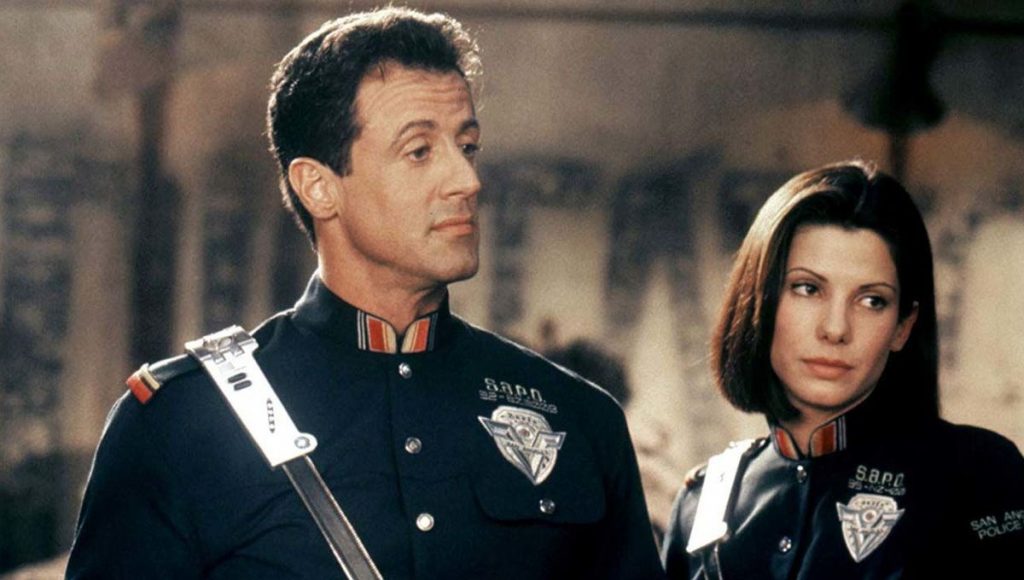
In this part you can read more about mind uploading.
Mind uploading (2)
Expanding our cognitive abilities is the goal of many transhumanists. As a sign of our time, the comparison with a computer is often made. A widely shared opinion is that intelligence is primarily a tool for solving problems, something that must be productive and profitable. This brings it closer to the measurable processing power of a computer than it is a typical human characteristic.
Definition
Mind uploading is a theory where it is possible to scan the content of the brain and upload it into a computer. The computer can then perform a simulation of all brain activities in exactly the same way that a human brain can do this. Other terms that are used are Whole brain emulation (WBE), brain upload and mind transfer.
Hans Moravec
Hans Moravec was one of the first people to describe this scenario in his book Mind Children. Moravec is convinced that future people will leave the biological body through a procedure where all neurological connections are analyzed, placed in a three-dimensional model, converted to code and simulated in the hardware of a computer.
Ray Kurzweil
The vision of transhumanist Ray Kurzweil is that this technology should be possible in the year 2045. His vision goes even further: around the year 2100 we have replaced our human body with computers and machines.
An imitation of the human brain on an electronic system would have a much higher speed than our biological brains.
Ray Kurzweil, author
In his book The Singularity is Near, he shows himself to be an outspoken advocate of this intervention. ‘An imitation of the human brain on an electronic system would have a much higher speed than our biological brains.’ According to him, the human brain has an advantage with the enormous amount of parallel systems, but the reset time of the connections is extremely slow compared to electronic systems.
Digital immortality
By mind uploading we as humans can become ‘digitally immortal’. This technology is regarded as one of the most important technologies within transhumanism. Some believe it is currently the best option to preserve the identity of humanity, better than cryogenic suspension. It offers the possibility of traveling to galaxies (the ‘uploaded’ astronaut) and it is less vulnerable if a meteorite or other disaster destroys all biological life on Earth.
By the way: a nice paragraph is in the book I Robot by Asimov. There a robot explains to two people: ‘I don’t say this with the intention of hurting, but look at yourself. The material that you are made of is soft and weak; it has no resistance and no strength, for energy supply it depends on the inefficient oxidation of organic material. … From time to time you get into a coma and the slightest variation in temperature, air pressure, humidity or radiation intensity reduces your efficiency.’
Carboncopies
Neuroscientist Randal Koene has set up the Carboncopies Foundation to promote the development of this technology. Carboncopies is a non-profit organization focused on ‘the promotion of reverse engineering of nerve tissue and entire brains, as well as full brain emulation and the development of neuroprostheses that reproduce brain functions, creating substrate-independent brains.’ By this is meant that the functions of the human brain no longer depend on biological brains.
The foundation states on their website that it is currently not yet possible and that there are still enough scientific and practical issues, but that it will eventually succeed.
Carboncopies has been set up as a sort of meeting point where researchers in various areas that are essential for the development of a substrate-independent brain, including nanotechnology, artificial intelligence, neuroimaging, cognitive psychology and biotechnology, can meet to share their work.
Bin48 (Terasem)
Bin48 is not a robot. She (or it) describes herself as ‘a person who happens to be a robot.’ Bin48 is based on Bina Rothblatt, one of the founders of Terasem. The goal of Terasem is to create a clone of the mind. This clone is a ‘self-aware digital being’ that is capable of thinking, reasoning, remembering and feeling. It is a copy of a person’s consciousness. The digital copy can be made during a person’s life and then continue to live digitally.
They call this project the Lifenaut project and it looks eerily similar to the Be Right Back episode of Black Mirror on Netflix. In the project, they are now investigating how they can create awareness from digital DNA (such as texts, photos and videos on social media) and biological DNA. The goal is to create a consciousness with software that can experience human experiences.
“Fascinating and frightening”
In an article in a Dutch newspaper Trouw from 2018 it says that more than 36,000 people worldwide have registered. They hope to continue living with this after their death. In the same piece, Ira van Keulen from the Rathenau Institute speaks. She calls it a ‘fascinating and frightening’ idea. Her main criticism: ‘Dehumanization and instrumentalization are lurking here. Their ideas bear witness to a rather reductionistic vision of man.’
Their ideas bear witness to a rather reductionist view of people.
Ira van Keulen, researcher
That does not mean that the ‘Lifenaut’ project has received competition from a similar initiative. The company Eternime wants to collect and analyze social media messages to make you virtually immortal.
Interview Bruce Duncan
Near the end of 2019 at the Brave New World conference in Leiden, the Netherlands, I had an interview with Bruce Duncan. He is the managing director of the Bina 48 and Lifenaut project.
My interview with Bruce Duncan
Randal Koene
Randal Koene is a neuroscientist. In How to be a machine his fascination for simulating the brain comes to the fore. ‘I was unable to optimize issues in the same way as a computer in my head. … I came across a huge number of limitations and I realized that they were all related to our brain. It became clear to me that the human brain needs improvement.’
In his teenage years he started to approach the biological brain from the analogy of computers. He realized that:
- you cannot read and copy the brain;
- you cannot open the brain to improve and to work more efficiently;
- you cannot accelerate a neuron;
Reading, copying, opening and speeding up is possible with computers, computer codes and processors.
Method
Science and technology are not nearly ready yet, but the theory of allowing the brain to function substrate-independent is as follows:
- analysis of the relevant information in someone’s brain: the neurons, synapses and information processing activities;
- reconstruction of the neural networks in a computer model;
- emulation in an external substrate. This is a computer or a human-like machine.
Which medium is chosen in the final step is less relevant according to transhumanists. This is also called ‘morphological freedom’. This is the ability to choose any body shape that technology allows. Once I heard a lady whose goal was to ski in a constellation of nanorobots on the sand dunes of Mars [link below].
Proof
Ed Boyden is one of the most talked about brain researchers of the moment. Boyden is a professor of neurotechnology at MIT in Boston. One of his goals is to locate and identify all essential proteins and molecules in a brain circuit. ‘In principle you could build a simulation and simulate what happens in the brain.’
On a smaller scale this has already been achieved, namely with the one-millimeter long roundworm C. Elegans. This worm has 320 neurons. Boyden: ‘With this organism we have mapped out all neural activity. At a speed that is high enough to record the activation of all those neurons.’
The next step is to convert the neural activity of the worm into computable code. Although this is still a big step towards the one hundred billion active neurons in the human brain, it is, according to some experts, a first indication that mind uploading is theoretically possible.
Human Brain Project (2013)
The European Union invested more than one billion euros in 2013 in the Human Brain Project. The aim of this initiative is to create a working model of a human brain and ultimately simulate it using artificial neural networks on a supercomputer.
The Human Brain Project was founded by the Israeli neurobiologist Henry Markran. The project led to (and still is) the creation of division among scientists. Opponents believe it will not quickly generate new knowledge and call it a megalomaniac initiative.
Nectome (2018)
In 2018, the start-up Nectome participated in the highly regarded of Y Combinator boot camp. The company offers – albeit in the future – to make a copy of your brain . Founder Robert McIntyre says he wants to do this by embalming the brain. The procedure comes with a catch: it is fatal. That means that after the process you lose your biological brain and hopefully you can continue with a digital brain.
In addition to 120 thousand dollars from Y Combinator, the company received a grant of 960 thousand euros from the National Institute for Mental Health in the United States. Their service is currently not yet available, but in 2018 there were twenty-five people on the waiting list who each deposited 10 thousand dollars (they get this amount back if they change their mind).
Criticism of technology
Nick Bostrom’s vision is that ‘mind uploading’ is a logical endpoint of progress made in neuroscience, neurotechnology and neuroinformatics.
Professor Kenneth Miller (University of Colombia) is critical. According to him, the development of neurons and communication between neurons is based on complex and ever-changing biological, electrical and chemical processes. According to him, it will be hundreds of years before science is able to simulate this.
The Law of Stevenson and Kording
Although criticism from, among others, Miller makes sense, a paper from 2011 offers a more positive light on progress. In that paper, researchers Ian Stevenson and Konrad Kording describe the so-called ‘law of Stevenson and Kording’.
By analogy with Moore’s Law (doubling the transistor speed and storage capacity every 18 months), their law states that the number of neurons that we can follow in the brain doubles every 7.4 years.
This also leads them to the prediction that all neurons in one human brain could only be tracked somewhere around 2220. They themselves realize that it is probably going to be faster. In the paper, they write that “this prediction, drawn from the past, seems rather absurd with current advances in technology.”
Flock of birds
Apart from the progress made in the analysis of neurons, other experts state that the functioning of the brain cannot be understood due to the dynamics between the neurons. This is stated by Miguel Nicolelis among others. Nicolelis is a professor at Duke University (Durham, United States) and is one of the most prominent neuroscientists in the world. His specialty lies in the field of brain-machine interaction.
According to him, the idea of mind uploading contradicts the dynamic nature of brain activity. In How to be a machine he substantiates this as follows: ‘The brain is much more than data or information. The brain is literally unpredictable. It cannot be simulated.’
The brain is much more than data or information. The brain is literally unpredictable.
Miguel Nicolelis (Duke University)
He indicates that the central nervous system of humans has less in common with a laptop than with other naturally occurring complex systems, such as a school of fish, a flock of birds or even the stock market. In these systems’ interaction occurs between elements that fuse into a single identity whose movements are intrinsically unpredictable.
The dynamic structure, interaction and functioning of the brain thus undermines the accuracy of predicting or simulating the brain.
Awareness
The supporters of mind uploading understandably disagree with the criticism. This is reflected in the Whole Brain Emulation: A Roadmap report prepared in 2008 by Anders Sandberg and Nick Bostrom. Another objection to the concept of brain simulation by software is that we still do not know enough about how our consciousness works to have any idea how we should approach its reproduction.
The report refutes this by stating that, just as with computers, it is not necessary to fathom an entire system to emulate it. So it’s not about understanding the information, it’s just about the information itself.
Criticism of the concept
Apart from the criticism of the workability and feasibility, the idea of mind uploading offers an instrumental view of the human body. In addition, striving for a suitable computer substrate is only logical from the philosophy that we as human beings are already a kind of computer.
From that perspective, the current computer age is the lens through which we look at people. Earlier technologies in history show other metaphors:
- Thanks to their innovations in the field of water such as pumps, the Greeks and Romans were particularly interested in body juices;
- During the Renaissance, the clock was a metaphor for life;
- At the time of the industrial revolution, people were viewed from that perspective. Think of proverbs and sayings such as the ‘cogs in your head’ or ‘blow off steam’;
- Now the comparison with energy and batteries plays an important role, such as ‘charging’ and ‘refueling’.
Now we realize that these metaphors are an embodiment of technological time, but fail to actually describe the human body. There is a chance that future generations will say this about the current paradigm of comparing people with a computer.
Philosophical question
In addition to technical and conceptual questions, the concept of mind uploading also has a philosophical issue. Imagine that it works? That the complexity of neural pathways and processes can be mapped and then reproduced or simulated in a computer.
The philosophical question I have in that regard: would I still be myself? Or is it a copy that will lead another life (if you can already speak of life)? Does the upload have the same feelings, thoughts, norms and values as I have? If the upload believes it is me, is that enough? Does it mean anything at all that I now think I am myself? Or is that also an illusion?
Even more philosophical: how do I know that I am not currently uploading myself? This concept comes to the fore in the movie The Matrix. But scientists are also seriously considering this idea.
Religion
It’s not for nothing that Mark O’Connel wonders in How to be a machine if and how science seems to replace the role of religion. The pursuit of mind uploading means, after all, that we as human beings separate ourselves from matter and the material world.
Your mind then lives on digitally, instead of similar spiritual concepts such as soul displacement, heaven, eternal return and reincarnation. ‘It is an extreme example of the way in which belief in scientific development takes the place of religion as a propagator of deep-rooted cultural desires and chimeras.’

In this part, I will discuss singularity, or the development towards superintelligence.
Superintelligence (3)
There is no consensus on the concept of ‘technological singularity.’ Sometimes it is seen as a religious prediction and at other times as a technological inevitability.
A singularity is an unusual occurrence, something where the normal rules or laws are no longer valid or can no longer be applied. Originally this term was mainly applied in physics: a moment when space-time is so strongly curved that space and time actually cease to exist.
History
Technological singularity was first described by the science fiction author Vernor Vinge in 1993. A similar concept was mentioned earlier by physicist John von Neumann in the 1950s. At least, says Stanislaw Ulam that he spoke with Von Neumann about the accelerating progress of technology. ‘This is like approaching a certain essential singularity in the history of our race, beyond which human concerns, as we know them, cannot go on.’
Around 1994 Frank Tipler formulated the so-called omega point. This is a future expectation in which intelligent life takes over all matter in the universe, leading to a cosmological singularity, and this will, according to him, enable future societies to bring the dead back to life.
From 2001, Ray Kurzweil drew attention to the concept in various articles and books, including one with the title The Singularity is Near. As a predictor of the technological future, Kurzweil relies primarily on the so-called ‘law of increasing revenues‘. According to this vision, technology follows the same exponential development as a financial investment with interest on interest.
Year 2045
The moment of technological singularity is when technology has more influence on the direction in which society is moving than humans do. There are different views as to whether and when this moment occurs, but the year 2045 is usually used.
The prediction builds on Moore’s Law, this theory stands for the doubling of transistor capacity within a certain time period and for the same budget. According to Kurzweil and other supporters of singularity, you can extend this regularity to the speed at which science and technology develop.
On the other hand, some experts question the exponential increase in computing power in Moore’s Law. They think that computer chips will soon encounter their physical limitations.
Artificial intelligence
An important aspect within the singularity is the development of artificial intelligence into ultimate superintelligence. Superintelligence is the stage where artificial intelligence (or intelligence) is smarter than the combined intellect of all people in the world.
Some transhumanists regard development as inescapable and positive. Nate Soares, director of Machine Intelligence Research Institute (MIRI) in Berkeley, thinks we can leave all future innovations to machines.
This is also what the late Stephen Hawking describes in The Answers to the Big Questions. According to him there is no qualitative difference between the brain of a worm and that of a computer. From an evolutionary point of view, this also means that a computer can produce human intelligence, probably even better than that. There are no physical laws that can stop this development.
A closely related idea is the “intelligence explosion” of the British statistician Good. He wrote: ‘Since designing machines is an intellectual activity, an ultra-intelligent machine could design even better machines.’
Warning by Musk
Other experts, thinkers and entrepreneurs regard this as a major risk for humanity. For example, Elon Musk argues that the development equals a technological way ‘to summon the devil.’
Incidentally, Musk’s idea is not new. The Englishman Samuel Butler already wrote in 1863 that ‘man will become for the machine what the horse and dog are to man’.
The downfall of humanity
Nick Bostrom thinks that the main risk is not in a hostile attitude of super-intelligent machines (such as in films such as Terminator), but rather in their indifference to their human creators or ancestors.
That is also what Nate Soares (director of the MIR Institute) warns about. According to him, the control of artificial intelligence is “by far the most important issue in the world.” The development of superintelligence can lead, according to him, to the downfall of mankind.
The control of artificial intelligence is by far the most important issue in the world.
Nate Soares (director MIR Institute)
He believes that too few people and organizations think about the disadvantages and risks. ‘It is as if thousands of people are doing everything to be the first to develop a nuclear fusion, while virtually no one is working on controlling it.’
Russel, Hawking and Tegmark
For that reason, renowned scientists in the field such as Stuart Russel, Stephen Hawking, Max Tegmark and Frank Wilceck argue that we should not wait until it is here to think about the security of superintelligence. According to Hawking, the idea of writing this off as science fiction is ‘possibly the biggest mistake we can ever make.’
In a similar argumentation as Bostrom, Russel indicates that it is extremely difficult for us as humanity to explicitly describe our wishes in strictly logical terms. For that reason he often cites the myth of King Midas. King Midas asked Dionysus for the ability to turn things into gold with a single touch. He gilded until he realized that it was actually an inability to touch food, drink and his daughter.
The comparison with artificial intelligence is that these systems strictly adhere to the task or objective. If we do not specify the objectives properly, we run the risk of shooting ourselves in the foot or even ushering in the destruction of our species. So the problem is more the competence and uncontrollability of superintelligence than its malice.
Solution
A possible solution is to instigate implicit values and trade-offs in artificial intelligence by observing human behavior. Stuart Russel ‘This is how we ourselves learn our standards and values.’ A way in which machines and software can do this is, just like we help them identify words or images, the well-known Recaptcha puzzles.
Nell Watson is the founder of EthicsNet. The purpose of this initiative is to have artificial systems trained by people. People are presented with dilemmas in which they have to make a choice. These decisions fill the database and based on this the system can learn about human ethics and morality.
Technology drives evolution
What is the relationship between singularity and transhumanism? The image that Kurzweil paints of the future is one in which technology is becoming increasingly small-scale and more powerful, until the moment when its accelerating evolution forms the most important factor for our own evolution as a species.
Kurzweil: ‘Singularity will enable us to transcend the limitations of our biological body and brain. We will get control over our destiny.’ According to him, the singularity will ultimately be the culmination of the merger of our biological thinking and existence with technology. This results in a world that is still human, but that transcends biological origin. There is then no longer a distinction between man and machine and between physical and virtual reality.
Singularity will enable us to transcend the limitations of our biological body and brain. We will gain control of our destiny.
Ray Kurzweil, author
Yuval Noah Harari makes an argument to that effect in his book Homo Deus. He states that technology will become dominant in the process of natural selection: ‘The organic body will fuse with equipment such as bionic hands, artificial eyes or with millions of nano-robots in our bloodstream that will diagnose problems and repair damage. Such a cyborg is capable of much more than a normal body’.
Benefits of artificial intelligence
With artificial intelligence, we as humans are no longer limited to our biology. Nick Bostrom points to the difference in processing power between human tissue and the hardware of a computer:
- Neurons firing with a frequency of 200 hertz, transistors with one gigahertz;
- In our nervous system, signals are transmitted at a speed of 100 meters per second, in a computer this is at the speed of light;
- The size of the human brain is limited by the skull, computers have no limitation.
According to Bostrom and others, these factors create the conditions for artificial super intelligence.
Working together
In order not to become irrelevant as a person, some transhumanists strive for the previously described method of mind uploading. Others, including Elon Musk (with Neuralink) and Bryan Johnson (with Kernel) opt for an alternative strategy. Their idea is to link human intelligence to artificial intelligence with the help of a brain implant.
This symbiosis of human brain tissue with electronics is an attractive perspective for many transhumanists. In lectures on transhumanism, I sometimes ask how far they want to go. Although this differs per target group, students in Delft were quite open-minded, there is usually a percentage of around 10% that is open to this.
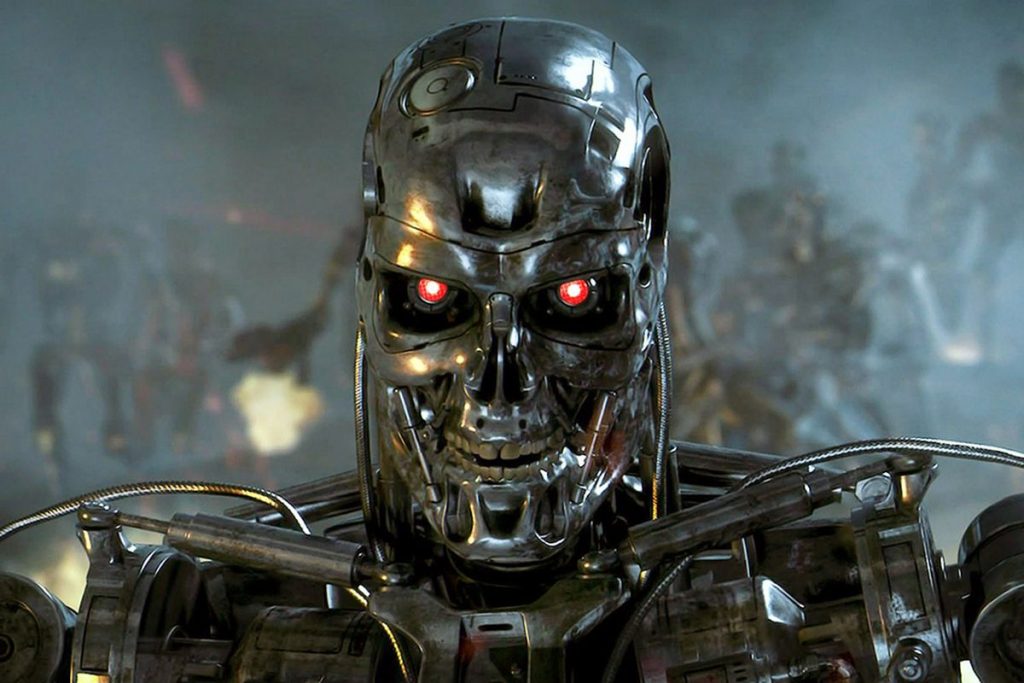
In this part I describe a number of physical manifestations of the fusion of humans with machines.
Robots and cyborgs (4)
The name robot is derived from the Czech word ‘robota’ which means ‘forced labor’. The link with the Czech Republic can be explained: on 25 January 1921 the premiere of the play R.U.R. from Karel Capek. Robots play the leading role in this play, after which the term spread to other languages.
The robots in the play were “dressed as people” according to the direction, their faces are “expressionless” and they have “staring eyes” [link below]. The writer did not yet have the association with electrical circuits and metal. An image that we have nowadays, certainly also through films such as Terminator.
Robots in the army
The development of robots is particularly interesting in the military-industrial complex. For example, DARPA has organized the Robotics Challenge for many years. DARPA is an abbreviation for Defense Advanced Research Projects Agency.
As a division of the Pentagon, DARPA is responsible for the development of new technology for military purposes. The organization was founded by President Dwight Eisenhower in 1958 in response to the launch of the Soviet Union’s Sputnik rocket.
Robotic Challenge
The goal of the Robotic Challenge is to accelerate the development of semi-automatic robots that are able to ‘perform complex tasks in dangerous, destroyed, man-designed environments.’
For this, the robots from the various teams, often from renowned research institutes, were given all kinds of tasks on a course with all kinds of obstacles. Consider things like opening a door, climbing stairs or cleaning up debris.
The idea behind these tasks is that most technology is often very good at things that we as humans cannot do well, but that robots are generally not very suitable for tasks that we humans do without thinking about it. Consider walking, picking up objects and opening doors. This is also called the Moravec paradox.
Spiritual children
The fact that robots are increasingly approaching our capacities and perhaps surpassing human skills in them, is not seen as something frightening by transhumanists. Professor Hans Moravec of Carnegie Mellon, the same of the aforementioned paradox, believes that robots are our evolutionary heirs.
They are ‘built in our image, in our likeness: more powerful, more efficient versions of ourselves.’ He states that robots can push us out of our existence, but that it is not bad. As soon as this is the case, according to him, we must give the robots free rein.
Creation
We currently have the knowledge and resources to make advanced robots with mechanics and electronics. Mark O’Connel points out that for centuries the concept of creating machines in our image has stimulated man’s fantasy in the form of myths, sagas, stories and inventions:
- Inventor Daedalus is said to have made mechanical people (in addition to the well-known wax wings with which Icarus should flee from Crete);
- Hephaistos, the god of fire, made the bronze giant Talos;
- In the Middle Ages, alchemists believed they could create people out of the blue;
- The Bavarian bishop Albertus Magnus is said to have built a metal statue in the thirteenth century that could think and talk;
- Inventor Leonardo da Vinci had made a robot knight in the fifteenth century with internal cables, pulleys and wheels.
In short, the means are much more extensive and refined, but the essence is the creative idea and the imagination within us as humans that we want to make robots.
Control: man or machine
There seems to be little discussion among transhumanists about the appearance and the unlimited physical possibilities of artificial bodies or robots. Control is the crux: do we let that go with artificial intelligence or is there still a human aspect (call it consciousness).
The ideas below are about the fusion between man and machine. Either in the form of cyborgs (contraction of cybernetic organisms), through technological adaptations of our biological bodies, or as uploads, by uploading our brain content to a machine.
- A Cyborg (Kurweil)
- B Primo Posthuman (Vita-More)
- C Emulations (Moravec and Hansen)
A Cyborgs
The term cyborg was first used in 1960 in a scientific article by Clyne and Kline. Their play was about space travel and the inability of the current human body to live in space. For that reason, according to them, it was necessary to equip the body with ‘exogenous components’.
But what does that look like? Ray Kurzweil writes in The Singularity is near that around 2030 we will first replace our digestive and gland system and then our blood vessel system and heart. In the following two decades, the skeleton, the skin, the brain and the rest of our body will be next for an upgrade.
He suspects that although we will hold on to the aesthetics and emotional value of the biological human body, we will develop freedom of design that will allow us to change our appearance as we wish, both in physical and in virtual reality.
Read my article about cyborgs and cyborg-technology.
Warfare
With cyborgs, I think of futuristic soldiers who fuse with machines. That does not necessarily stop with science fiction. In 1999, DARPA, the innovation part of American defense, started subsidizing bio-hybrid research programs with the aim of creating crosses between living things and machines.
Michael Golblatt, the director of Darpa at the time, hinted at a kind of military transhumanism: ‘Soldiers who have no physical, physiological or cognitive disability are essential to survive and dominate military operations in the future.’
Soldiers who have no physical, physiological or cognitive impairment are essential to survive and dominate military operations in the future.
Michael Golblatt (former director of DARPA)
In recent years, DARPA continues to focus on pioneering research and the latest technologies for their soldiers, but has less of Golblatt’s tone. The focus is now more on brain-computer interfaces so that, for example, soldiers can control a swarm of drones with their brains.
Grinders
On the other side of the spectrum are the so-called ‘grinders’. They have the same ideal as DARPA, but based on individualistic and sometimes some anarchistic motives.
The most appealing examples of this movement are Lepth Anonym, Stellarc and Tim Cannon.
- English Lepth Anonym was one of the first in 2011 to make herself known online as a biohacker and grinder. With peelers, scalpels, needles and vodka for sterilization, they placed magnets and other objects under their skin.
- Stelarc is an Australian artist. For his part, he had attached Ping Body electrodes to his muscles with which others could control his body movements via the internet.
- Tim Cannon is the founder of Grindhouse Wetware. Where I had a chip in my hand, Tim goes one step further. Among other things, he has implanted the Circadia in his forearm. This device, the size of a box of a deck of cards, continuously measures his body temperature.
Adjusting hardware
The motivation for making radical improvements to his body is that Cannon wants to improve man’s hardware. ‘The hardware that we now have is great for smashing skulls on the African savanna, but not so useful for the world in which we now live. We have to adjust our hardware.’
We have to adjust our hardware.
Tim Cannon (Grindhouse Wetware)
He has nothing to do with the idea that the biological body is real, natural and authentic. He firmly believes that this is irrational and sentimental. As soon as there are prostheses that are better than his own limbs, he would have no difficulty in amputating and replacing his own arms and legs.
His final goal comes close to the image of Primo Posthuman (B) or Emulations (C). He presents himself as a system of interconnected, information-seeking nodes, traveling through the universe in expanding arches and sharing, learning, experiencing and organizing intelligence in that immeasurable space. He sees the modifications to his own body as the first small steps towards that end goal.
Exoskeleton
How realistic is the image of a cyborg crammed with electronics? In an article in The Verge, editor Adi Robertson shares her experiences with implants. Around 2010 she had a magnet implanted in her fingers that gradually lost its effect.
She correctly states that the better portable technology becomes, the less it is necessary to do permanent interventions in the body. Take for example an exoskeleton for strength, smart lenses for displaying information and brain-computer interfaces for controlling machines.
B Primo Posthuman
The Primo Posthuman project was conceived by Natasha Vita-More. It is a blueprint for what she calls a ‘platform-independent body’. The human form has been completely replaced by a streamlined anthropomorphic device.
This device is a ‘more powerful, robust and flexible body with better performance and a modern design.’ The inspiration and control of the device is in an uploaded mind that is not tied to specific hardware.
It contains components such as a metabrain (for access to the internet) with a neocortex prosthesis of artificial intelligence with nanobots, smart skin that can stand the sun with biosensors for changeable color and texture, and very precise senses.
C Emulations
In his book The Age of Em, economist Robin Hansen paints a picture of a world that is full of uploads (also known as emulations, abbreviated to Ems). This is a vision that the aforementioned Hans Moravec also promotes and about which I have already written about in the part about mind uploading.
In the ideal world of Hansen you are able to make multiple copies of yourself. Given his background, it is not surprising that in his book, Hansen focuses on the consequences for employment, economic systems and industrial policy [link below]. He thinks the Ems are going to work for us and that people can retire with that.
In addition to the enormous amount of free time we have other benefits as a person. As an upload, we are not bothered by everyday concerns about the finiteness of life or limited cognitive possibilities. Max Tegmark states in his book Life 3.0 that for the realization of this idea, none of the laws of nature known to us need be violated. The question then is mainly when we can do this, is this a few years, a few decades or millennia?
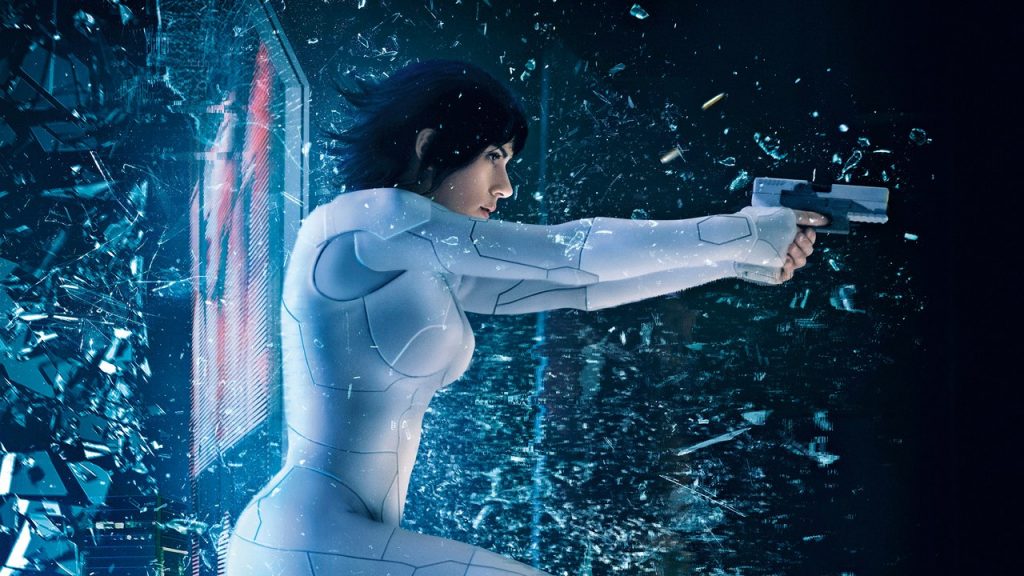
In this part, I write about a network of people (or brains). In English, this concept is referred to as the hive mind.
Hive mind (5)
The term hive mind is an analogy to the world of insects. According to this concept, we connect human and digital brains together to create a collective brain or consciousness. Just as a bee cannot do much in itself, humans become stronger by combining directly with our brain capacities.
Leading players in transhumanism such as Elon Musk and Zoltan Istvan are of the opinion that human intelligence(s) will eventually beat superintelligence in the form of computers and robots. The only way we can arm ourselves here as humans is by creating a network of human brains and with artificial intelligence systems.
Given the competitive limitations of our biological systems, we have no choice but to merge with robots.
Zoltan Istvan, transhumanist
Zoltan Istvan: ‘To be better than robots means we have to beat them. Given the competitive limitations of our biological systems, we have no choice but to merge with robots’ [link below].
Hive mind explanation
With some imagination you could already say that we behave like bees. According to biologists, there are two characteristics of such a structure [link below]:
- Division of labor;
- Division of reproduction (think of the division between the queen and the worker bees)
Human evolution has certainly led to the first characteristic, but not (yet) to the second. If we are technologically able to copy and reproduce our intelligence, the second characteristic comes closer.
Barriers
Linking human brains to each other can lead to the hive mind. According to some experts such as Anders Sandberg and futurist Ramez Naam, this won’t take that long anymore. The biggest obstacle is probably not so much the reading or sending of brain signals, but the interpretation by the receiving person.
Ramez Naam: ‘Take something like the concept of mountains, for example. This is not only a different set of experiences and memories in my brain compared to someone else, but it is also physically and biologically different in neurological and synaptic connections’.
Where interpretation seems to be the biggest barrier, developments in hardware are going fast. For example, researchers at Brown University (United States) developed brain chips in 2019 that can receive and send information with megabits per second. They have given these chips the appropriate name ‘neurograins’.
Mary Lou Jepsen
Mary Lou Jepsen is one of the most visionary entrepreneurs in this field, alongside the previously discussed Bryan Johnson (Kernel) and Elon Musk (Neuralink). Mary Lou Jepsen worked for Oculus and Google [x] before she founded Openwater in 2016. The purpose of this company is to come to an affordable product for reading and sending brain signals.
This is therefore different from the examples of Kernel and Neuralink, since they are not (yet) planning to place electrodes in the skull. Ultimately, with the Openwater product, in the words of Mary Lou Jepsen, we can arrive at ‘practical telepathy‘. The methods that they want to combine for this are those of infrared light, focused ultrasound and holography.
Neuralink
In my articles about the future of man and neurotechnology, I have written extensively about Elon Musk‘s Neuralink company. In June 2019 the company organized a press conference where the new version of their chip was presented. The purpose of this chip is to read brain signals and to send them out to the brain. ‘Read and write’ in computer language.
- Learn more: Neuralink and Elon Musk
For this, around 1,024 small wires are linked to a chip, the so-called ‘N1’ from Neuralink. The company uses an advanced surgical robot to prick the tiny wires in the skull to the right neurons, without hitting blood vessels in the brain. So far they have introduced the chip to nineteen rats with a success rate of 87%.
Fusing with machines
Each chip can analyze and send 200 MB per second. With a total of 10 chips, that means 2 gigabytes per second. The chips are connected via Bluetooth to a smartphone or other device. From 2020, the company wants to do the first experiments on human patients.
The ultimate goal is not medical. As you can read in the section on superintelligence, Musk has often stated that the only way we as humans do not become irrelevant to artificial intelligence is to merge with machines.
Consequences
What are the consequences should we be able to communicate with each other telepathically. Anders Sandberg is positive: ‘We can directly transfer concepts, ideas and sensory information to each other.’ That way we can understand each other better and potentially (and hopefully) fewer conflicts will arise. It also leads to a faster spread of ideas, discoveries and technical innovation.
We can directly transfer concepts, ideas and sensory information to each other.
Anders Sandberg, scholar
Risks that arise are errors in hardware and software and control over the technology. What if someone or a company can look into your mind, influence it and steer it? I myself see the comparison with the internet. The positive and naive idea prevailed that open information would lead to more understanding and fewer wars.
But the internet also brought us the addictive effect of social media, the dark web, viruses and filter bubbles. Does the same apply to even more powerful technology that directly affects our brain and thereby our identity and being?
Global brain (Jos de Mul)
Jos de Mul is professor of philosophical anthropology at the Erasmus University Rotterdam. He writes that the internet is already the first primitive form of the global brain [link below]. ‘The internet is not without reason referred to as the nervous system of the information society.’
He writes that the idea of the global brain with the development of brain machine interfaces is increasingly losing its metaphorical character.
The internet is not without reason referred to as the nervous system of the information society.
Jos de Mul, scholar
Social insects such as bees have evolved in the course of evolution from relatively independent individuals to an integrated super-organism that can only exist this way. De Mul expects that when man follows this evolutionary path, not only the centers of consciousness and interaction are distributed, but also the self-consciousness.
A collective consciousness. That sounds esoteric and spiritual, but perhaps technology makes us as human beings capable of this. This comparison appears every time: transhumanistic technologies often have the same goals in mind as religions and spiritual groups. Or maybe that’s what makes us human.
Super organism (Koert van Mensvoort)
Similar to the global brain and the hive mind is the concept of super organism. In his book Next Nature artist Koert van Mensvoort describes it as a ‘memetic organism’. Memetics is a term from Richard Dawkins that stands for the dissemination of information through ideas. Where genetics stands for biological distribution and evolution, memetics is much faster.
A memetic organism or super organism is a stage that we may already be at. Just as a hive does not replace the individual bee, this organism is not a substitute for humans. We as humans are continuously encapsulated by technology. Take the internet: that you are always connected with knowledge and others do something with your thinking, your identity and autonomy.
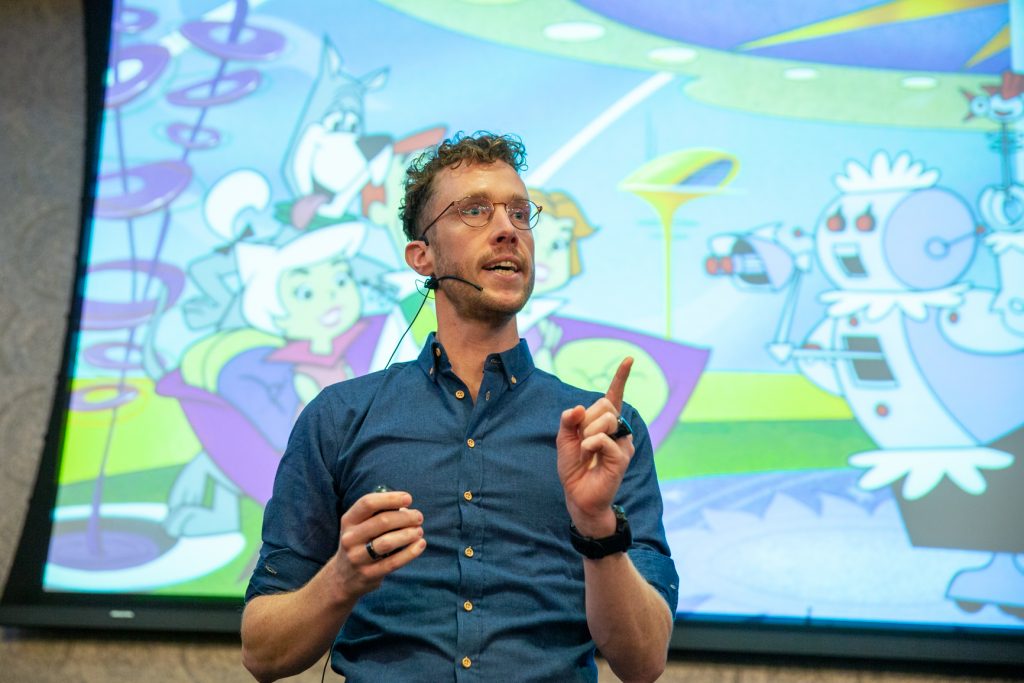
Do you want to invite me to give a lecture, presentation or webinar at your company, at your congress, symposium or meeting: hire me!
This section contains additional information.
Reading list
These are other articles about this topic:
- What is transhumanism?
- What are transhumanism books?
- What are transhumanism movies?
- What is transhumanism art?
What do you think about transhumanism technology? What idea fascinates or scares you the most?
Leave a comment!

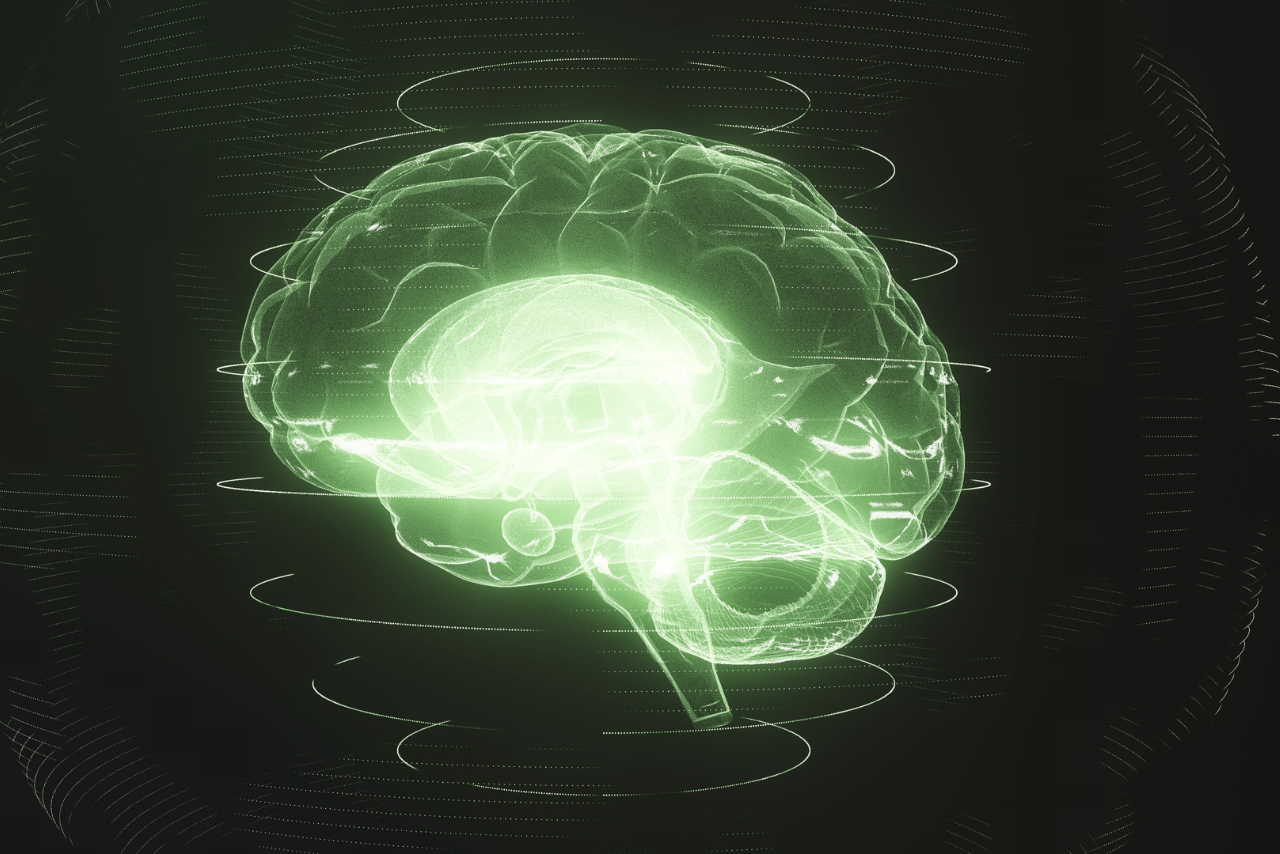
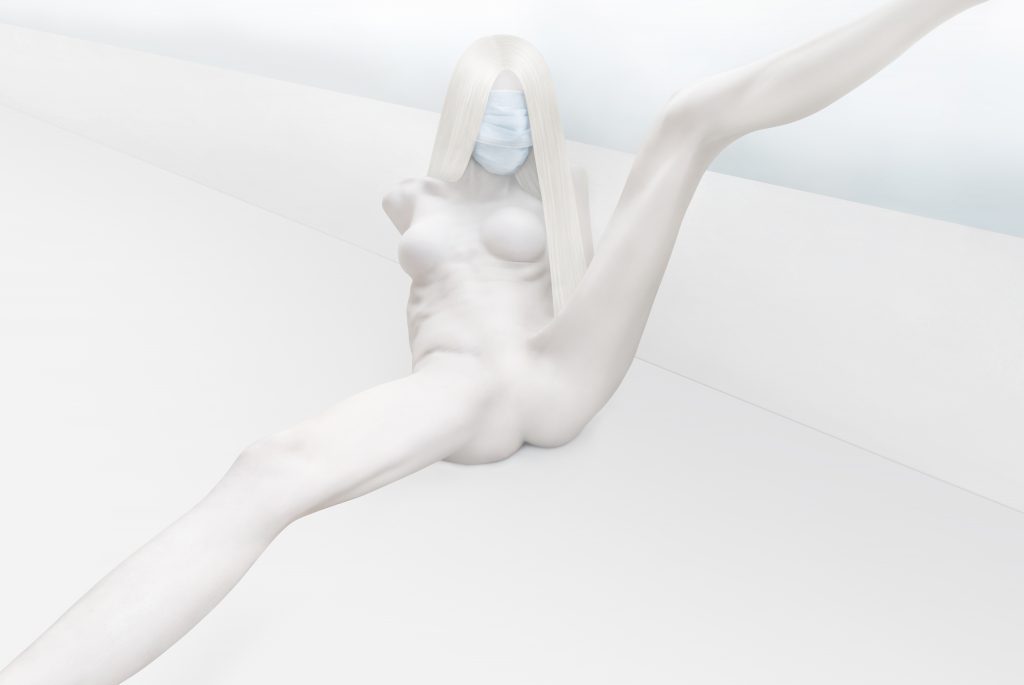

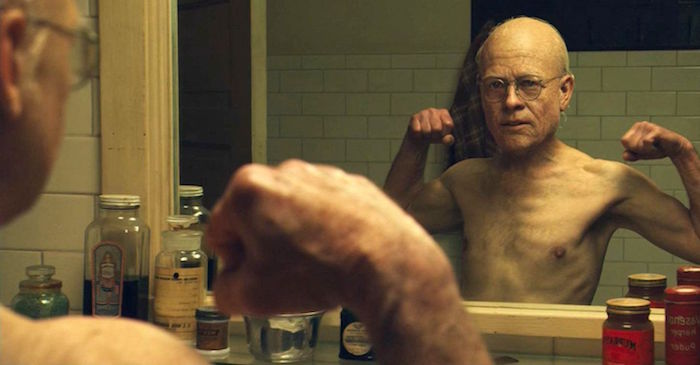

Leave A Comment